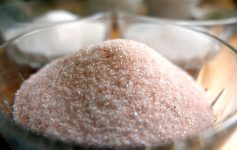
Here it is!
It’s another blog about staying healthy and happy during the holiday season. As a naturopathic and functional medicine doctor, my goal is keep everyone thriving and feeling amazing. These tips aren’t meant to make anyone feel guilty for delighting in treats. Rather, they are intended to keep you on your own path to wellness and preferably choose treats that you can enjoy, not judge, and ones you want, rather than ones that hijack your brain and result in the FLC (feel-like-crap) syndrome.
Imagine this…a holiday where you were able to remain calm, have fun, enjoy nourishing food, and feel great about the choices you made. I want that for you.
The bottom line is to enjoy the festivities and your tribe, don’t miss out on health- promoting properties of relationships due to health obsession.
So here are my 7 Holiday Thrive Tips!
In case you missed my homepage blog (gasp!)…
Holiday Thrive Tip 1: Some Brain Food for Optimizing Food Choices
Read my blog from this Sunday and you get four tips in 1! It’s Black Friday early! I highlighted 4 simple tips to implement in order to keep you satisfied and comfy while honoring your desired food preferences if you have them for health reasons and aren’t . I also gave suggestions on how to mitigate any digestive distress that could result from possible food cross-contamination or from an intended splurge on a little something that may not be optimal food for your gut bugs.
Knowing What’s On Your Plate
Holiday Thrive Tip 2: The Optimal Turkey Experience
I’ve been posting fanatically on my Facebook page various blogs on the importance of organic and humanely raised animals for Turkey Day.
This excerpt from Green Med Info explains why you may want to trade in a conventionally raised gobbler for a happy one.
According to CNN.com, about 46 million turkeys are eaten in the US on Thanksgiving. With all those turkeys being consumed, do you know how those turkeys were raised?
Your Turkey Might Have Been Diseased and Had Tumors
Butterball turkey, which provides 30% of all turkeys eaten on Thanksgiving Day (in the
United States?), has already been exposed for their shocking abuse and cruelty of turkeys such as kicking, throwing and dragging turkeys, not to mention the disfigurement from ulcers and sores on these birds. In addition to the inhumane conditions are the turkeys fattened on GMO grain and weight-gain promoting antibiotics.
What About a Healthier Turkey Alternative?
Maybe this is the year, instead of buying Butterball, you’ll try a “Heritage Turkey.”
According to The Livestock Conservancy, Heritage turkeys must meet these criteria:
1. Naturally Mating
– Heritage turkeys must be reproduced and genetically maintained through natural mating
2. Long Productive Outdoor Lifespan
– Heritage turkeys must have long productive lifespans (Hens: 5-7 years, Toms: 3-5 years
3. Slow Growth Rate
– Heritage turkeys must have a slow to moderate rate of growth.
Along with the humane treatment of the turkeys are the taste benefits. According to bonappetit.com, the best bird to buy is a Heritage Turkey because they’re “pasture-raised, antibiotic-free and natural” and that “ensures a deeper, more intense flavor and firmer texture.” Did I also mention because they’re leaner and smaller, they cook at higher temperatures for a fraction of the time you would normally cook a bigger, GMO turkey?
…Find out how to purchase Heritage Turkeys, visit the turkey page on the Local Harvest website (non-affiliate link) (1)
Holiday Thrive Tip 3: For Non-Meat Eaters and for Side Dishes
What to Avoid.. without obsessing, see tip 4.
1. Trans Fats
Not only have they been linked to more cardiovascular disorders and now have enough evidence to not be recognized as safe for consumption, trans fats recently were related to memory issues. Don’t you want to remember your holiday? According to Health Day:
A new study presented at a recent meeting of the American Heart Association strongly linked trans fats to worse memory in young and middle-aged men. The researchers included about 1,000 healthy men, who were 20 years of age and older. (3)
Practical Solutions:
Avoid packaged and processed foods and enjoy home-baked and home-cooked organic meals to ensure you’re avoiding trans fats.
2. Gluten and GMOs- The Two Go Hand-in-Hand
I’ve written previously on how gluten is linked to various health and mood disorders and can ignite inflammation. Recent studies are linking GMOs and pesticides to gluten intolerance and Celiac disease through various causes including disruptions in gut bacteria, chelating minerals, disrupting mineral absorption, and affecting liver detoxification. SO, that processed-gluten free meal could be triggering a gluten-like reaction for some if it has GMOs.
Check out references 4-10 for more information.
Practical Solution:
Bring your own organic and gluten free dish to pass and enjoy at your gathering if gluten makes you feel bad.
NOTE: UPDATE ON GLUTEN-BASHING HERE.
3. EWGs List of 12 Artificial Flavorings to Avoid
Excerpt from Environmental Working Group:
Wednesday, November 12, 2014
Food should be good for you. But some isn’t. More than 10,000 additives* are allowed
in food. Some are direct additives that are deliberately formulated into processed food. Others are indirect additives that get into food during processing, storage and packaging. How do you know which ones to avoid because they raise concerns and have been linked to serious health problems, including endocrine disruption and cancer?
EWG’s “Dirty Dozen Guide to Food Additives” helps you figure it all out by highlighting some of the worst failures of the regulatory system. The guide covers ingredients associated with serious health concerns, additives banned or restricted in other countries and other substances that shouldn’t be in food. And it underscores the need for better government oversight of our food system.
Here’s the solution they provide:
Here’s a list of 12 additives that EWG calls the “Dirty Dozen.” We’ll tell you why, which foods contain them and what you can do to avoid them. (A good place to start is by looking up your food in EWG’s Food Scores database). (11)
Holiday Thrive Tip 4: Satisfy Your Taste Buds
Satisfy your sweet tooth with healthy recipes. Don’t deprive or starve yourself, but fill up on foods that are good for you and make you feel great. If you combine healthy fats with high protein treats (such as avocado chocolate dip) you’ll get the benefits of satisfying your cravings without messing up your microbiome.
Practical solution:
Bring foods you thrive on, but don’t obsess. Enjoy the activities and be flexible…and be careful of healthism. It is better to truly be present and enjoy a holiday treat on occassion without obsessing rather than stressing over perfection.
Holiday Thrive Tip 5: Don’t Drink Soda
Check out this blog on 20 practical tips for using Coca Cola that prove it doesn’t belong in your belly.
Drink filtered water. Enough said.
Holiday Thrive Tip 6: Community and Emotional Health
The impact of emotional eating, societal expectations, health status, stress, and the power of community all have an impact on digestion and assimilation and also need to be considered.
Emotional eating can be a physiological issue, and eating for your brain is important. It is not a moral issues. See this blog for more information. Enjoy the festivities and your tribe, don’t miss out on health- promoting properties of relationships due to health obsession.
Holiday Thrive Tip 7: Move Your Bootie
Not only does movement make you healthier and boost your mood, it is also a major stress reliever and may decrease stress by modulating various brain region activities. (12)
So, as you’re heading out for the holidays this year, remember how your unique biochemistry is interacting moment-by-moment to shape your future self and health outcomes and that making different choices today means different outcomes tomorrow. You can choose the amazing power of your mind, healthy support, and nourishing foods to enjoy the holiday season more fully. And, because no one is perfect, and may not want to be, you can also use the tools to support you with indiscretions.
This Thanksgiving, know that I am grateful for you and how you allow me to share my passion in empowering others to healthier and happier lives!
Sources:
(1) Rho, S. What’s On Your Plate? Green Med Info. November 24th 2014. http://www.greenmedinfo.com/blog/what-s-your-plate
(2) Health Day TV. Trans Fat and Memory. November 19, 2014.
(3) Health effects of trans-fatty acids: experimental and observational evidence. Eur J Clin Nutr. 2009 May;63. Suppl 2:S5-21. doi: 10.1038/sj.ejcn.1602973.
(4) The Influence of Glyphosate on
the Microbiota and Production of Botulinum Neurotoxin During Ruminal
Fermentation. Current Microbiology. November 19, 2014. DOI:
10.1007/s00284-014-0732-3
(5) Ji, S. GM Food Causes Deadly Bacteria To Grow In Your Gut. Green Med Info. November 19, 2014. http://www.greenmedinfo.com/blog/gm-food-causes-deadly-bacteria-grow-your-gut
(6) GMI Reporter. News Release: GMOs Linked to Exploding Gluten Sensitivity Epidemic (FREE PDF). November 25, 2013. http://www.greenmedinfo.com/blog/news-release-gmos-linked-exploding-gluten-sensitivity-epidemic-free-pdf1
(7) Source: Peters SL, Biesiekierski JR, Yelland GW, Muir JG, Gibson PR. Randomised clinical trial: gluten may cause depression in subjects with non-coeliac gluten sensitivity – an exploratory clinical study. Aliment Pharmacol Ther. 2014 May;39(10):1104-12. Epub 2014 Apr 1. doi: 10.1111/apt.12730.
(8) Decreased levels of heat shock proteins in gut epithelial cells after exposure to plant lectins.Gut. 2000 May;46(5):679-87.PMID: 10764712
(9) Sayer Ji. Opening Pandora’s BreadBox. GreenMedInfo.com
(10) NEJM. Celiac Disease: The Villian Unmasked? 348:2573, June 19, 2003 Clinical Implications of Basic Research
(11) Environmental Working Group. EWG’s Dirty Dozen Guide to Food Additives. November 12, 2014. http://www.ewg.org/research/ewg-s-dirty-dozen-guide-food-additives
(12) Evero, N., Hackett, L. C.,Clark, R. D., Phelan, S., & Hagobian, T. A. (2012). Aerobic exercise reduces neuronal responses in food reward brain regions. J Appl Physiol,
112(9), 1612-1619. DOI: 10.1152/japplphysiol.01365.2011



